Trip Report Part 1: Great Apes Photo Safari
 Tuesday, September 23, 2014 at 02:11PM
Tuesday, September 23, 2014 at 02:11PM
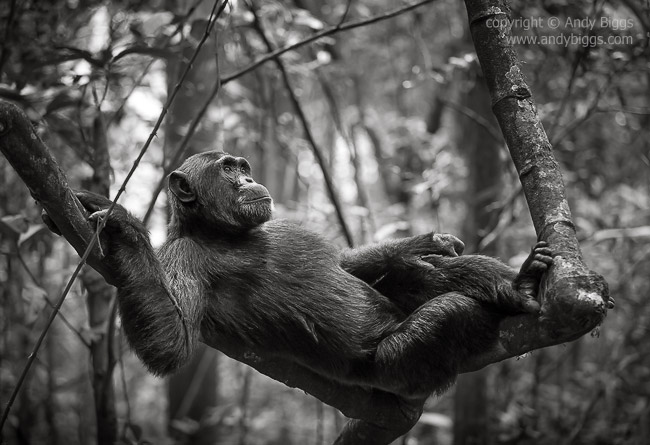
Chimpanzee, Kibale National Park, Uganda
I am recently back home from a pair of back-to-back safaris in east Africa, and this trip report is part 1 of 3 in the series. Part 1 will cover my primates trip, Part 2 will cover the wildebeest migration in Kenya and Part 3 will cover a post safari extension to the greater Amboseli N.P. region of Kenya. So here goes!
Our Great Apes Photo Safari took place between two eastern African countries, Uganda and Rwanda. We trekked for two primate species, chimpanzees and mountain gorillas. Chimpanzees can be found in many different countries, and on our itinerary we chose Kibale National Park, Uganda as our location. Kibale National Park is a premier location for observing and photographing wild chimpanzees, as we are allowed to obtain ‘habituation’ permits. These permits allow us to trek with chimpanzees and observe them from sun-up until sundown. I cannot stress the importance of this setup, as a normal permit scenario allows for only 1 hour of contact. All-day permits are incredible important for photographers, as there are so many behaviors these beautiful and dramatic primates go through throughout the day.
Our trip began in Entebbe, Uganda, where my small group of 7 people gathered after making the journey over to Africa. We met for dinner and drinks, enjoyed a few smiles and talked about our upcoming trip. We flew up to Kibale the next day, and over the next three days we trekked through the forest to find and keep up with our subjects.

Chimpanzee, Kibale National Park, Uganda
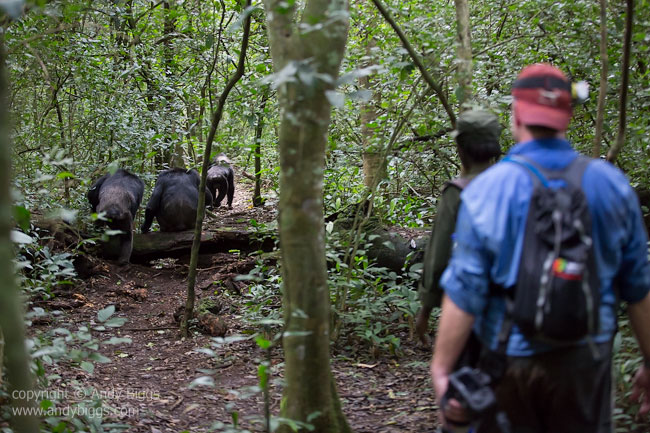
Trekking with chimpanzees requires a significant amount of walking at the same pace as the troop, which is quite demanding
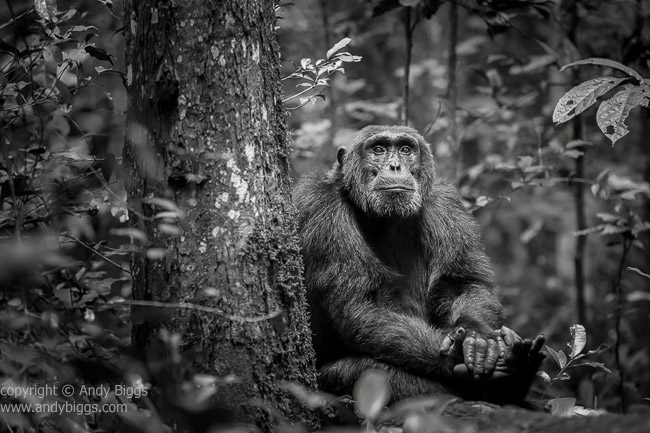
Chimpanzee, Kibale National Park, Uganda
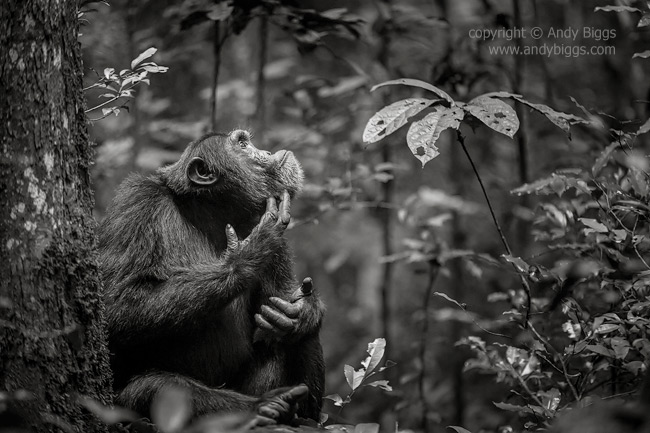 Chimpanzee, Kibale National Park, Uganda
Chimpanzee, Kibale National Park, Uganda
Gear used for primates:
- Canon 5DMk3 (rented from borrowlenses.com)
- Canon 70D (rented from borrowlenses.com)
- Canon 70-200mm f/2.8 (rented from borrowlenses.com)
- Phase One DF+ with IQ250 50mp digital back
- Phase One 75-150mm
The primary photographic gear amongst our group was a full frame dSLR with a 70-200mm f/2.8. Some had other lenses, however the 70-200mm f/2.8 was, by far, the most used during our three days with the chimpanzees. Since the light wasn’t abundant under the forest canopy, I was often shooting at f/2.8 and at ISO values ranging from 800 to 6400. My most common ISO value was either 1600 or 3200. Since I prefer shallow depth of field I rarely stopped adown past f/2.8. I did bring along my Phase One camera equipment with me, however due to the fast moving nature of the chimps I needed to use a system that was better suited for the environment (I did use the Phase One system with the mountain gorillas).
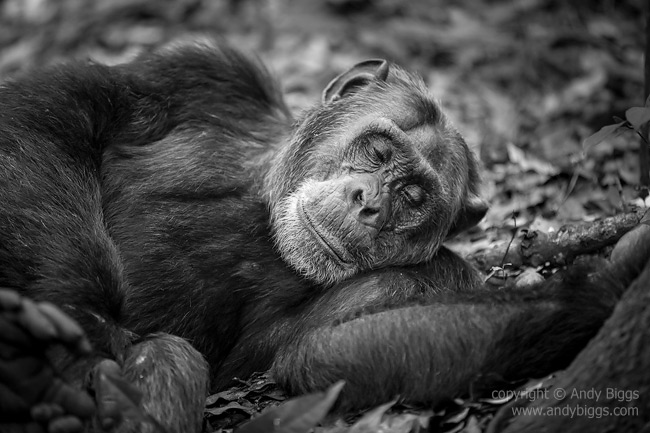
Restful Sleep
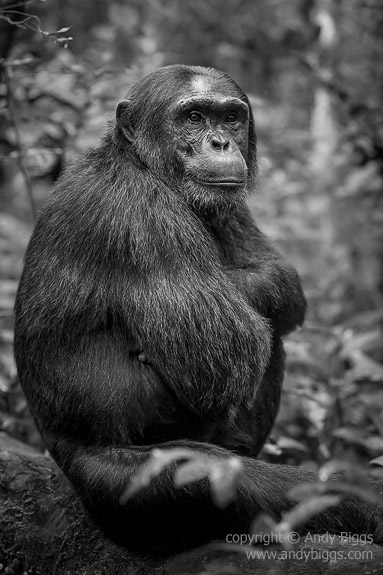
The Thinker
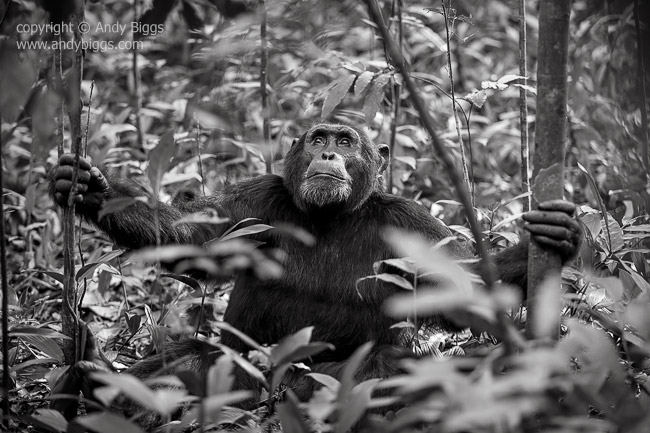
Chimpanzee, Kibale National Park, Uganda
After our three days of chimpanzee trekking we flew down to the border of Rwanda, crossed the border and continued on to our lodge in the Virunga Mountains. This move from Uganda to Rwanda also brought us higher in elevation. We then spent the next three days treeking at higher altitudes for the mountain gorillas, which almost always brings people to tears when they see them for the first time. Our first trek took us to see the Umubano family group, and this hike was (thankfully) one of the easier ones I have had over the past few years. On the second day we saw the most famous of the families, the Sabyinyo group, with its elder statesman Guhonda as its silverback head of family. Guhonda is now and old man by mountain gorilla standards, and this was my third time to see him. He is so gentle, yet powerful.
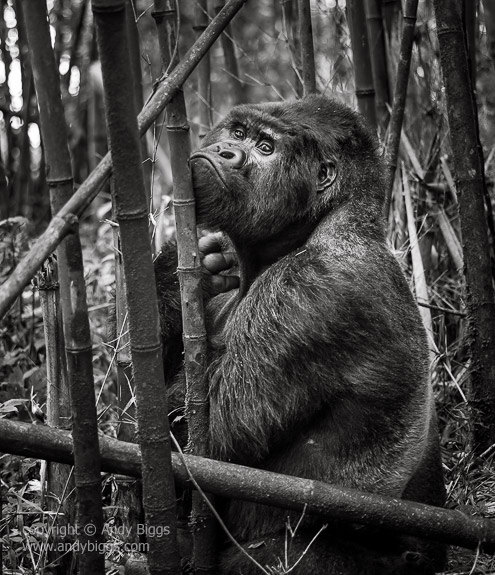
Guhonda the Silverback

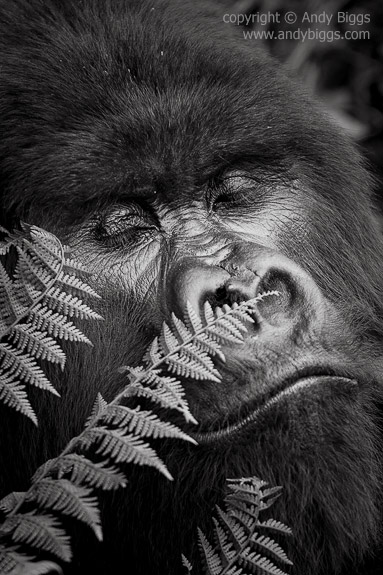
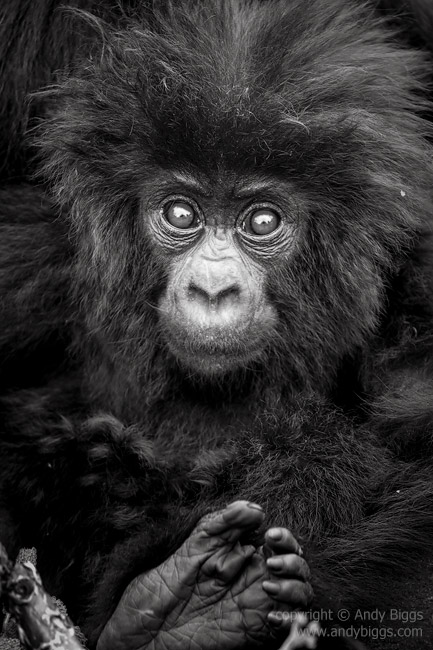
For the mountain gorilla treks I primarily used my Phase One camera gear, as gorillas move much slower and it was easier for me to compose, focus and shoot than when we were with the chimpanzees. Our treks were often very very muddy, which required stamina and good balance, however the effort was always worth it in the end. If you are considering a primates trip, please be prepared for aerobic exercise at altitudes up to 10,000 feet and for 6 to 8 hours. Each day. These trips aren’t for everyone, however I have never had a customer not see what they were there to see, even if they didn’t partake in all of the available treks. These days do wipe people out, with myself included.
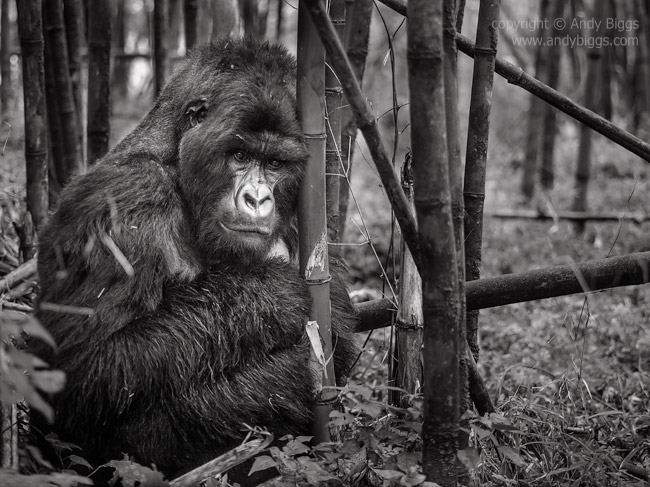
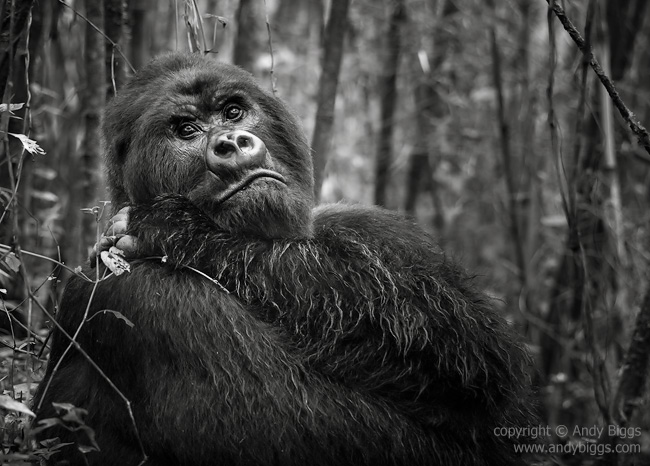
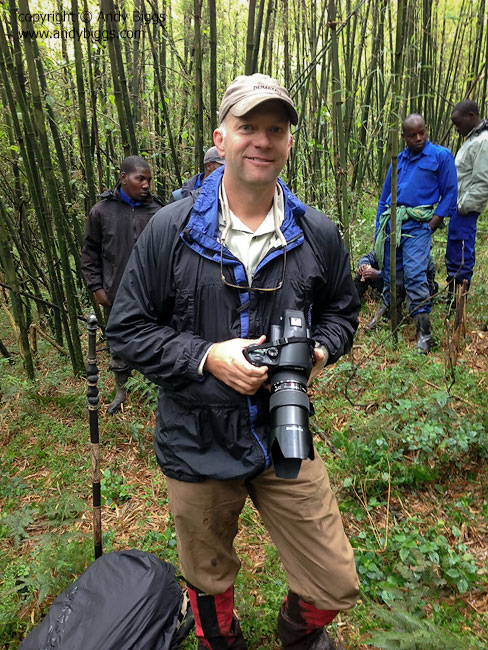
I have a primates trip scheduled for 2015, and the trip is already sold out before I even had the chance to do a trip write-up to market it. Due to the high demand for these trips, my co-leaders Randy Hanna and James Weis will also have trips planned in 2015 and beyond.
 Chimpanzee,
Chimpanzee,  Gorilla,
Gorilla,  Primates,
Primates,  Rwanda,
Rwanda,  Uganda in
Uganda in  Safari Reports
Safari Reports 

